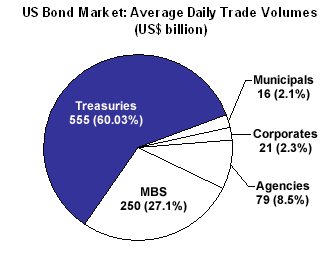TRACE: Overview and Implications for an Evolving Credit Market
Abstract
TRACE: Overview and Implications for an Evolving Credit Environment
TRACE is not the panacea that many observers had hoped it would be.
The US corporate bond market has changed significantly over the past several years, yet it would be a mistake to attribute these changes to TRACE without taking into account the combined effects of consolidation, structural changes, new product developments, and an interest rate environment that has put a crimp on liquidity. As is the case with other regulatory initiatives, TRACE remains a work in progress, and has raised as many issues as it attempted to address.
The US corporate bond market has always been plagued by a severe lack of liquidity. Although corporate debt accounts for 20% of the overall US bond market by outstanding notional, average daily trade volumes are relatively small, accounting for only 2.2% of total US fixed income transactions. Once new issues emerge from an initial frenzy of trade activity, they tend to settle into "real money" buy-side accounts, where they can languish for years until maturity.
In such an environment, dealers had no incentive to implement a price reporting mechanism that would shed light on an opaque, illiquid, and highly profitable market. As a result, prices were often inconsistent, varying widely even for trades of similar size executed within a few minutes of one another.
The National Association of Securities Dealers' (NASD's) Trade Reporting and Compliance Engine (TRACE) represents the first major initiative aimed at making the US credit markets transparent. Launched in July 2002 and rolled out over the course of the next three years, TRACE promised to make the credit market more efficient via the timely dissemination of prices.

"TRACE is not the panacea that many observers had hoped it would be," states Harrell Smith, manager of the Institutional Securities & Investments group at Celent and author of the report. "Market transparency is, at its core, a positive development, but it will not fundamentally alter the structure of the US corporate bond markets容ither for better or for worse. TRACE will not lead to a significant increase in retail participation, nor will it increase institutional trading volumes or drive up investment in corporate debt by institutional clients. The overall size of the corporate bond market will not grow as a result of TRACE, nor will trading be forced onto exchanges. And while TRACE may compress dealer margins, particularly among regional firms, corporate bond dealers will not face wrenching changes of the sort being visited upon their equity brokerage operations."
This report presents an overview of TRACE, focusing on both technology and market structure issues, and provides an analysis of its potential impact on the dealer, buy-side, and retail investment communities.
The 34-page report contains 13 charts and one table. A table of contents is available online.

